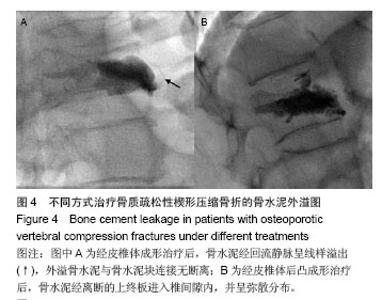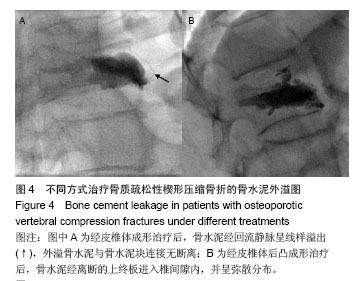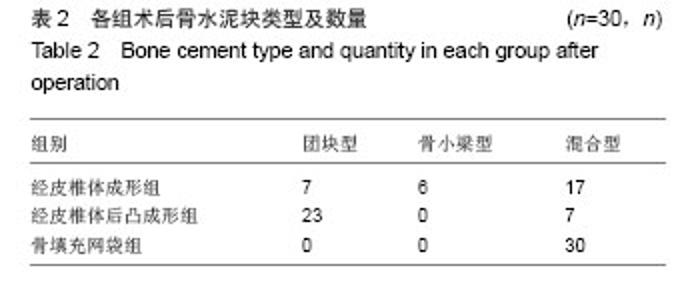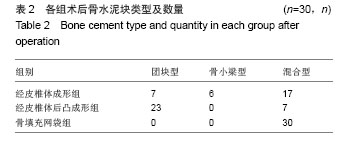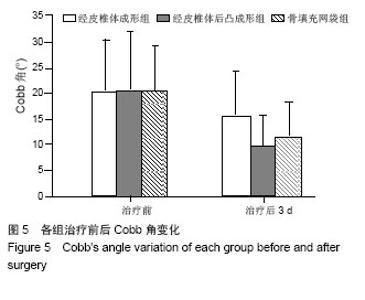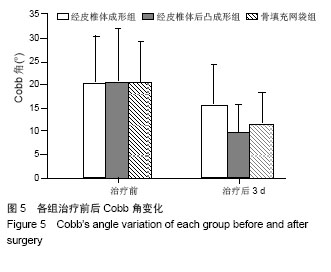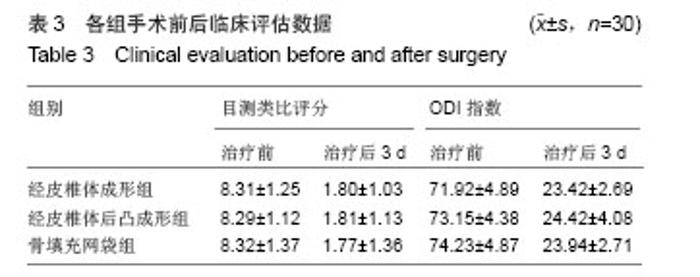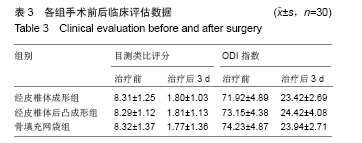| [1]Costa F,Ortolina A,Cardia A,et al.Efficacy of treatment with percutaneous vertebroplasty and kyphoplasty for traumatic fracture of thoracolumbar junction. J Neurosurg Sci.2009; 53(1):13-17.
[2]Sun G,Jin P,Li FD,et al.Preliminary study on a single balloon cross-midline expansion via unipedicular approach in kyphoplasty.Chin Med J (Engl).2008;121(18):1811-1814.
[3]孙钢,金鹏,刘训伟,等.球囊扩张椎体后凸成形术的技术操作及相关问题的探讨[J].中华放射学杂志,2007,41(11):1224-1227.
[4]吴春根,程永德.加强脊柱介入放射学的技术研究和临床应用[J].介入放射学杂志,2008,17(2):417-420.
[5]Hadjipavlou AG,Tzermiadianos MN,Katonis PG,et al. Pereutaneous vertebrolasty and balloon kyphoplasty for the treatment of osteoporotic vertebral compression fractures and osteolytic tumours.J Bone Joint Surg(Br).2005;87(3): 1595-1604.
[6]Pflugmacher R,Schroeder RJ,Klostermann CK.Incidence of adjacent vertebral fractures in patients treated with balloon kyphoplasty: two years' prospective follow-up.Acta Radiol. 2006;47(8):830-840.
[7]Weber CH,Krötz M,Hoffmann RT,et al.CT-guided vertebroplasty and kyphoplasty: comparing technical success rate and complications in 101 cases.Rofo. 2006;178(6): 610-617.
[8]Foo LS,Yeo W,Fook S,et al.Results, experience and technical points learnt with use of the SKy Bone Expander kyphoplasty system for osteoporotic vertebral compression fractures: a prospective study of 40 patients with a minimum of 12 months of follow-up.Eur Spine J.2007;16(11):1944-1950.
[9]Otten LA,Bornemnn R,Jansen TR,et al.Comparison of balloon kyphoplasty with the new Kiva® VCF system for the treatment of vertebral compression fractures.Pain Physician.2013; 16(5): E505-E512.
[10]Berjano P,Damilano M,Pejrona M,et al. KIVA VCF system in the treatment of T12 osteoporotic vertebral compression fracture. Eur Spine J.2014;23(6):1379-1380.
[11]汪李军,杨惠林,王根林,等.编织袋椎体后凸成形术治疗椎体压缩骨折的初步疗效[J].中国脊柱脊髓杂志,2011,21(2):170-171.
[12]张智海,沈建雄,张兰发,等.记忆合金椎体螺纹撑开器的设计与生物力学试验研究[J].脊柱外科杂志,2003,1(2):105-108.
[13]de Falco R,Scarano E,Di Celmo D,et al. Balloon kyphoplasty in traumatic fractures of the thoracolumbar junction. Preliminary experience in 12 cases.J Neurosurg Sci.2005;49 (4):147-153.
[14]Klezl Z,Majeed H,Bommireddy R, et al. Early results after vertebral body stenting for fractures of the anterior column of the thoracolumbar spine. Injury.2011;42(10):1038-1042.
[15]王静成,冯新民,杨建东,等.Jack椎体扩张器和球囊扩张后凸成形术的比较研究[J].中华骨科杂志,2010,30(9):842-847.
[16]Huskisson EC.Measurement of pain.Lancet.1974;2(7889): 1127-1131.
[17]Fairbank JC,Couper J,Davies JB,et al.The Oswestry low back pain disability questionnaire.Physiotherapy.1980;66(8): 271-273.
[18]刘训伟,魏代旭,彭湘涛,等.经皮椎体后凸成形术在治疗骨质疏松性椎体压缩骨折中恢复椎体高度局限性的观察及机制探讨[J].医学影像学杂志,2013,23(9):1457-1460.
[19]Kim YJ,Lee JW,Kim KJ,et al.Percutaneous vertebroplasty for intravertebral cleft: analysis of therapeutic effects and outcome predictors.Skeletal Radiol.2010;39(8):757-766.
[20]Galibert P,Deramond H,Rosat P,et al.Preliminary note on the treatment of vertebral angioma by percutaneous acrylic vertebroplasty. Neurochirurgie.1987;33(2):166-168.
[21]Alkalay RN,von Stechow D,Torres K,et al.The effect of cement augmentation on the geometry and structural response of recovered osteopenic vertebrae: an anterior-wedge fracture model.Spine (Phila Pa 1976).2008;33(15):1627-1636.
[22]Hierholzer J,Fuchs H,Westphalen K,et al.Incidence of symptomatic vertebral fractures in patients after percutaneous vertebroplasty.Cardiovasc Intervent Radiol.2008;31(6): 1178-1183.
[23]Luo J,Skrzypiec DM,Pollintine P,et al.Mechanical efficacy of vertebroplasty: influence of cement type, BMD, fracture severity, and disc degeneration. Bone.2007;40(4):1110-1119.
[24]Gaitanis IN,Carandang G,Phillips FM,et al.Restoring geometric and loading alignment of the thoracic spine with a vertebral compression fracture:effects of balloon(bone tamp)inflation and spinal extension.Spine J.2005;5(1):45-54.
[25]Kim MJ,Lindsey DP,Hannibal M,et al.Vertebroplasty versus kyphoplasty: biomechanical behavior under repetitive loading conditions.Spine (Phila Pa 1976).2006;31(18):2079-2084.
[26]Garfin SR,Yuan HA,Reiley MA.New technologies in spine: kyphoplasty and vertebroplasty for the treatment of painful osteoporotic compression fractures. Spine (Phila Pa 1976). 2001;26(14):1511-1515.
[27]Folman Y,Shabat S.A comparison of two new technologies for percutaneous vertebral augmentation: confidence vertebroplasty vs. sky kyphoplasty. Isr Med Assoc J.2011; 13(7):394-397.
[28]郑召民,邝冠明,董智勇,等.球囊骨扩张器与Sky骨扩张器在经皮椎体后凸成形术中应用的比较研究[J].中华外科杂志,2006, 44(24):1667-1671.
[29]孙钰,吴乃庆,曹晓建,等.硅胶薄膜囊预防椎体后凸成形术中骨水泥渗漏的实验研究[J].中国骨与关节损伤杂志, 2007,22(11): 913-915.
[30]刘训伟,孔小燕,钟建,等.骨填充网袋修复椎体压缩骨折的生物力学变化[J].中国组织工程研究,2014,18(16):2487-2492. |


